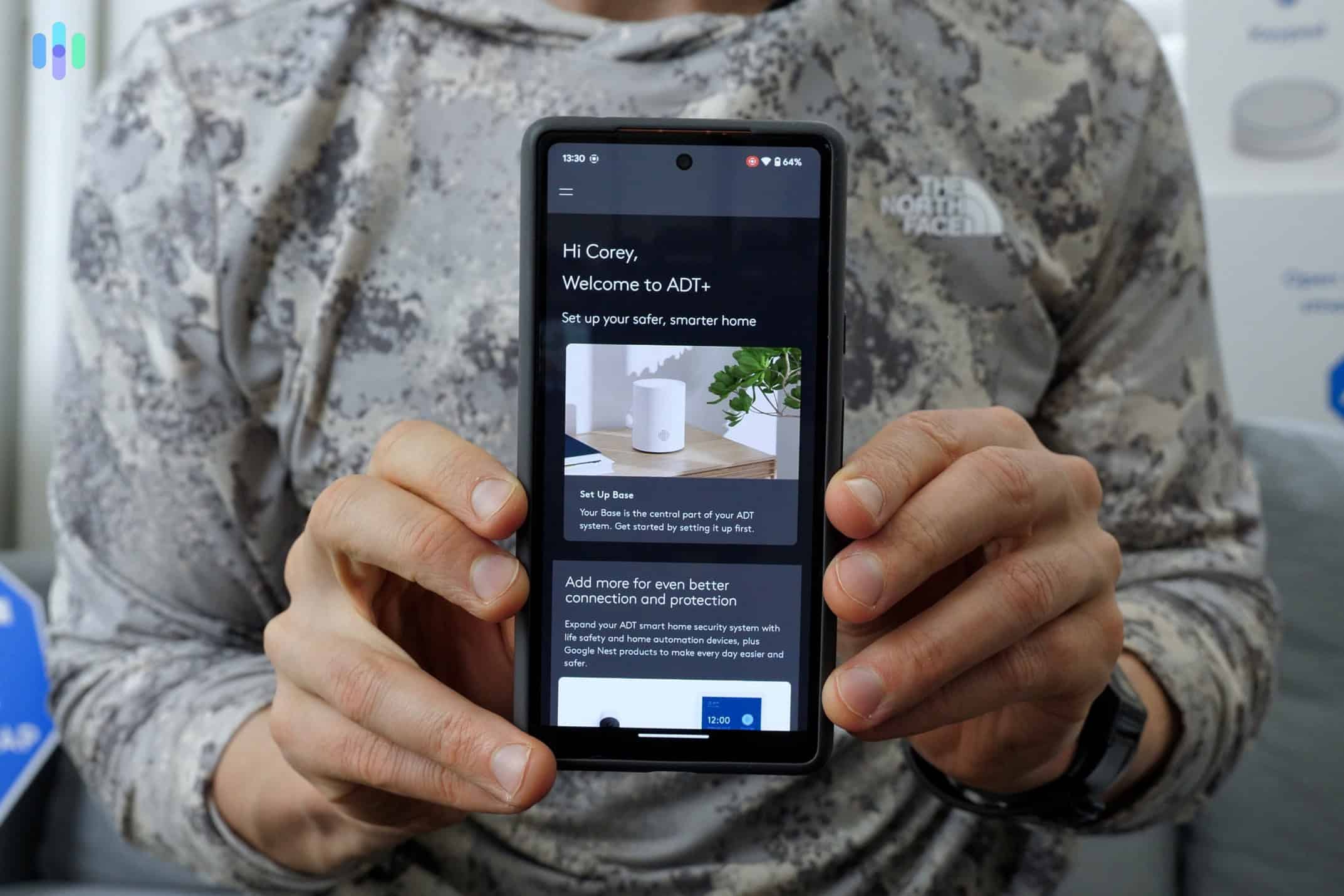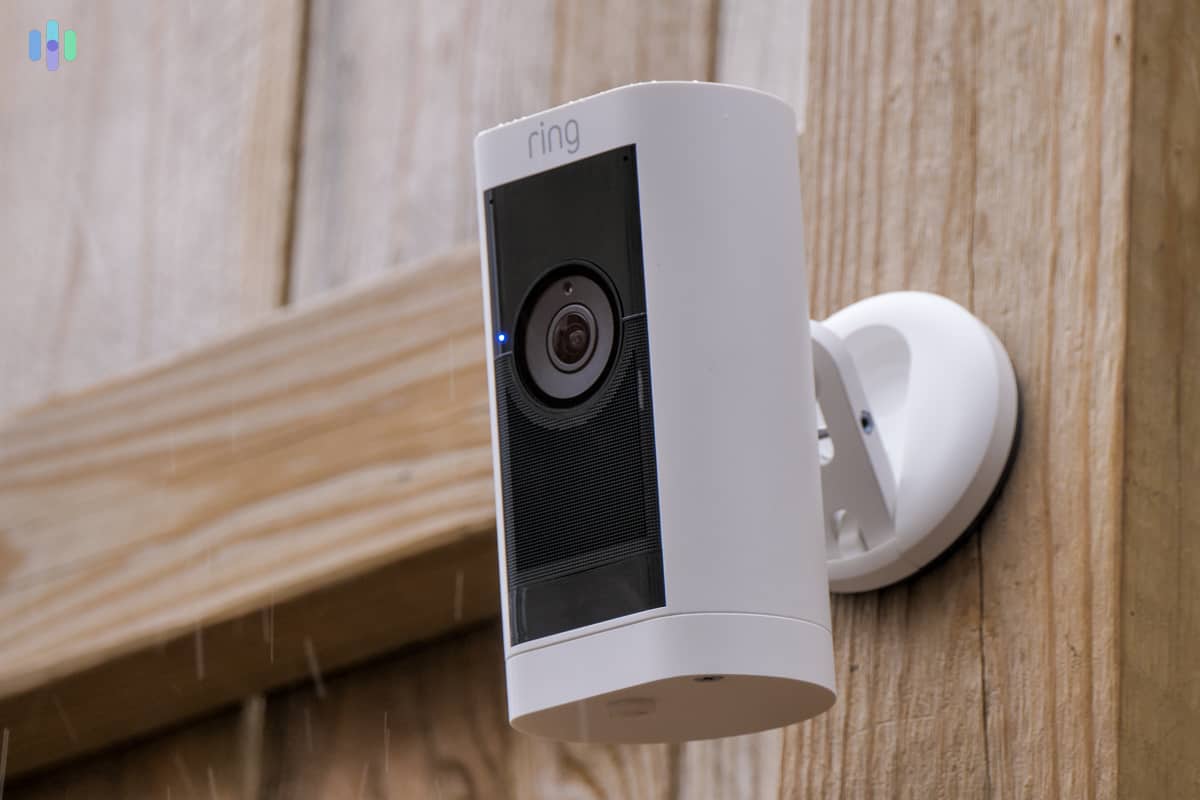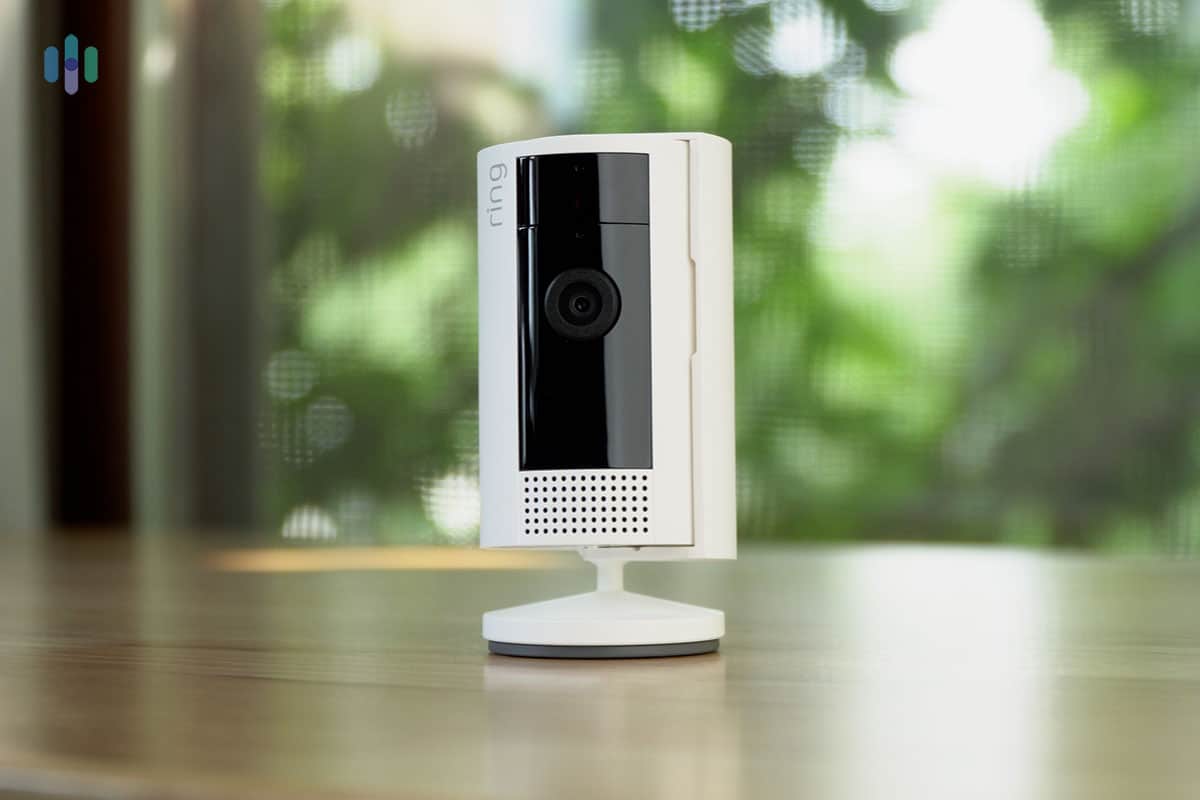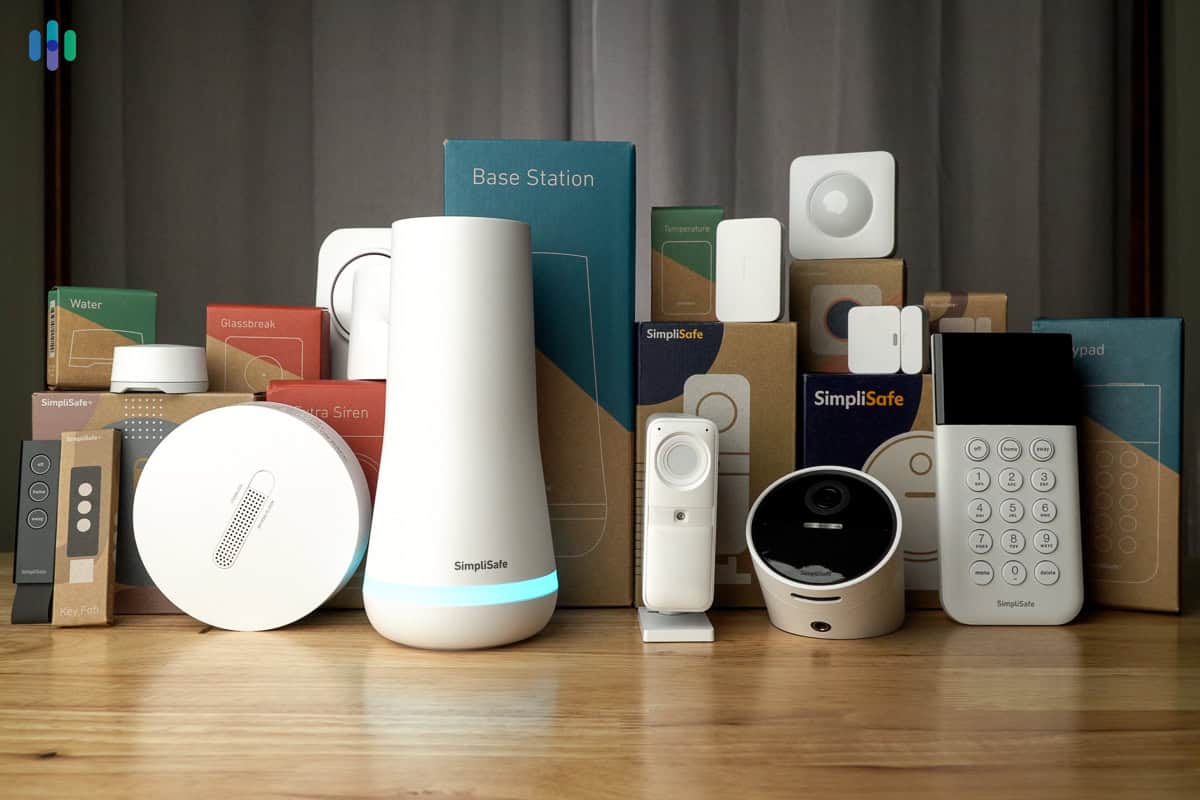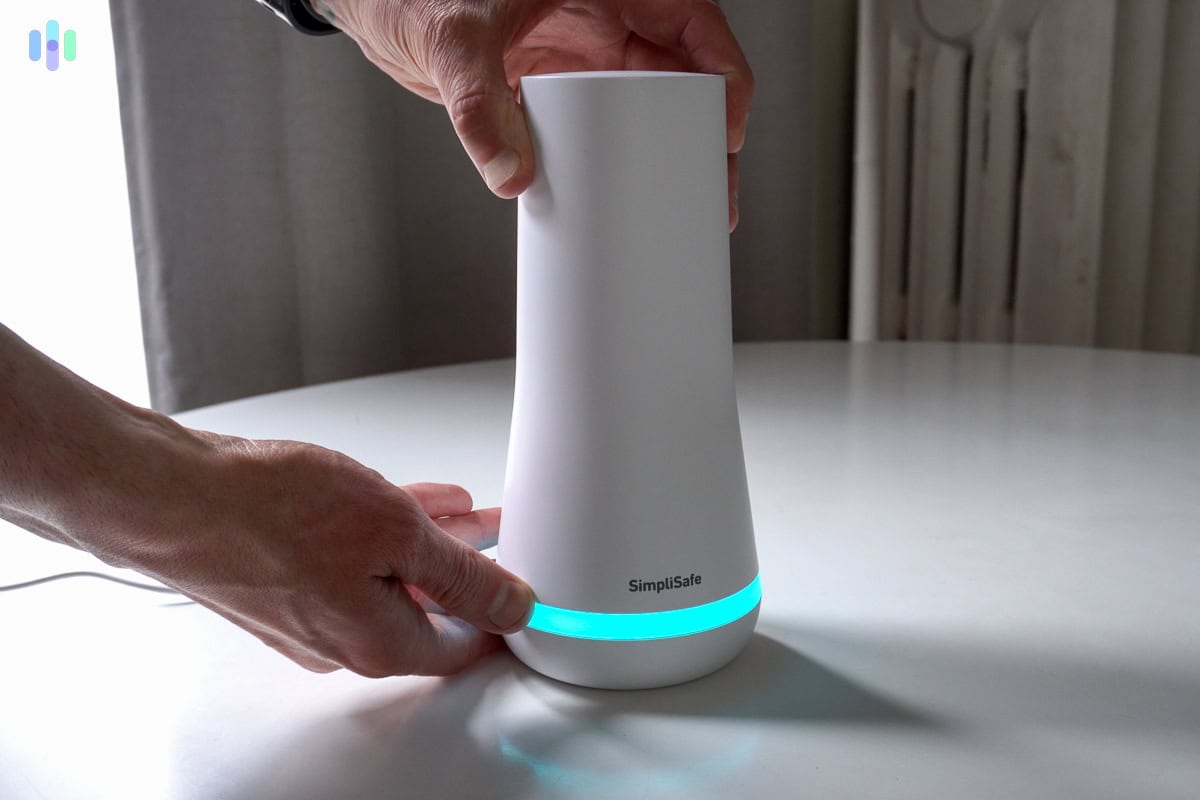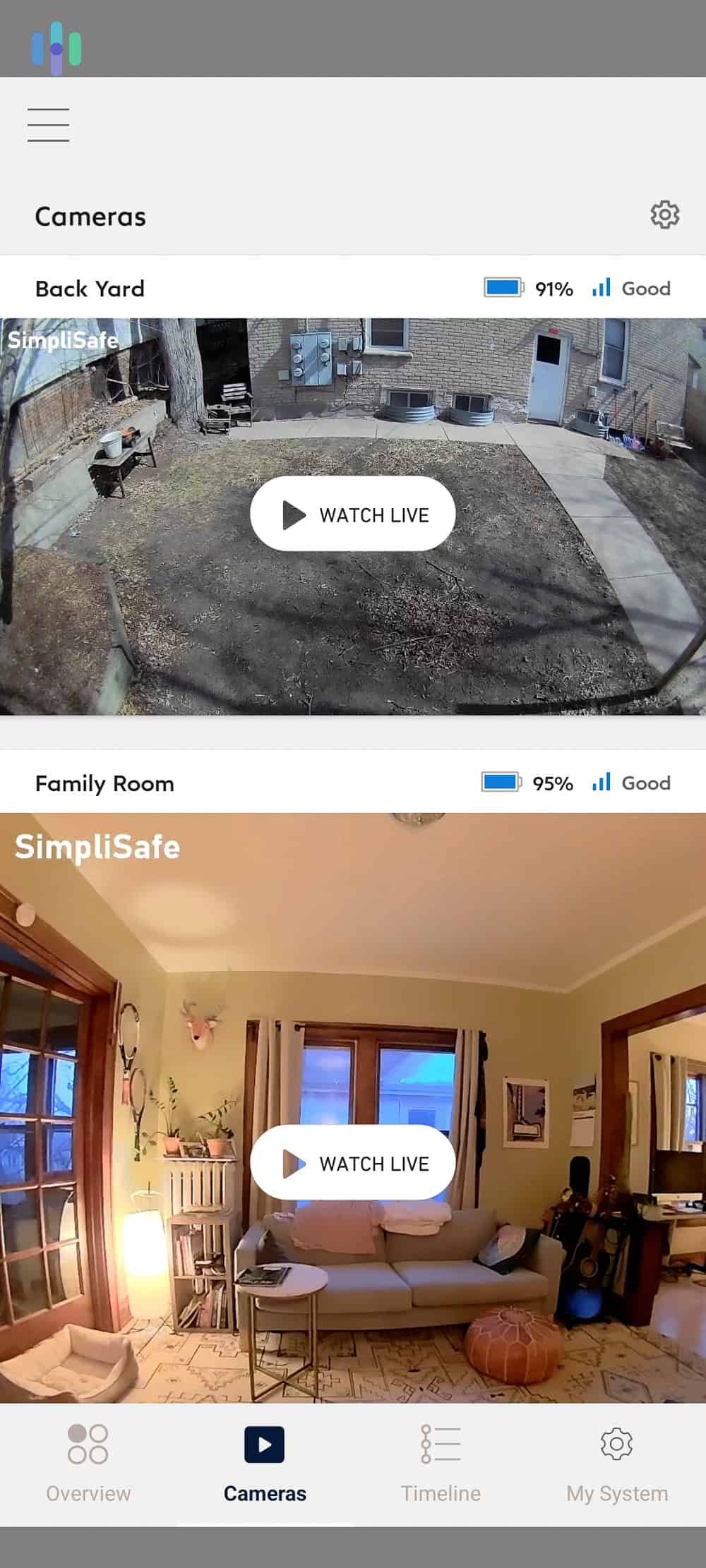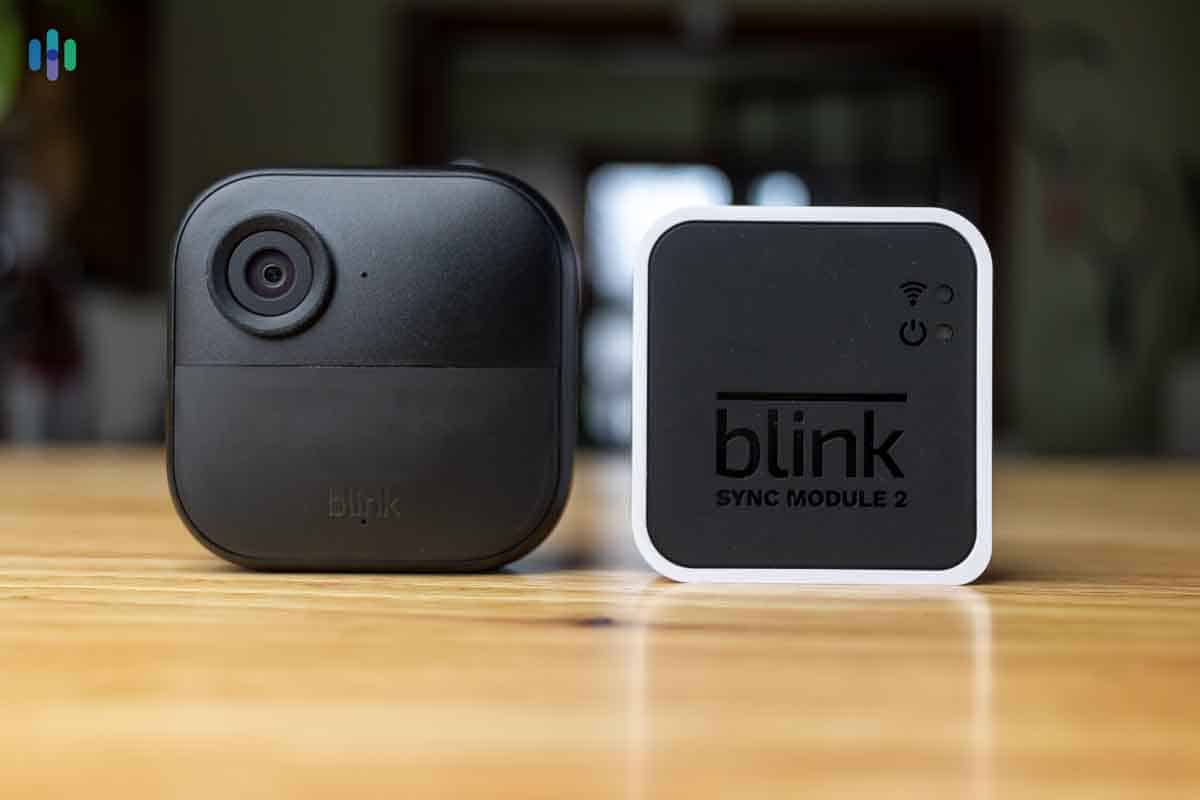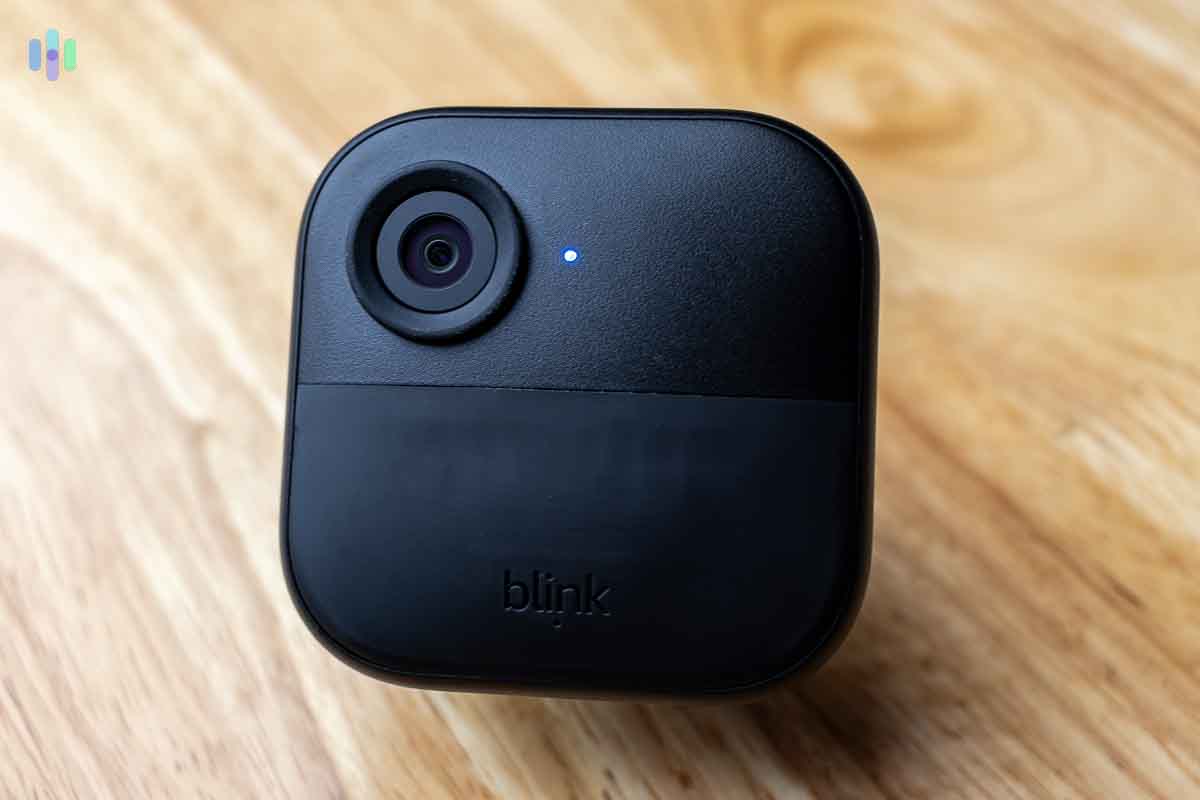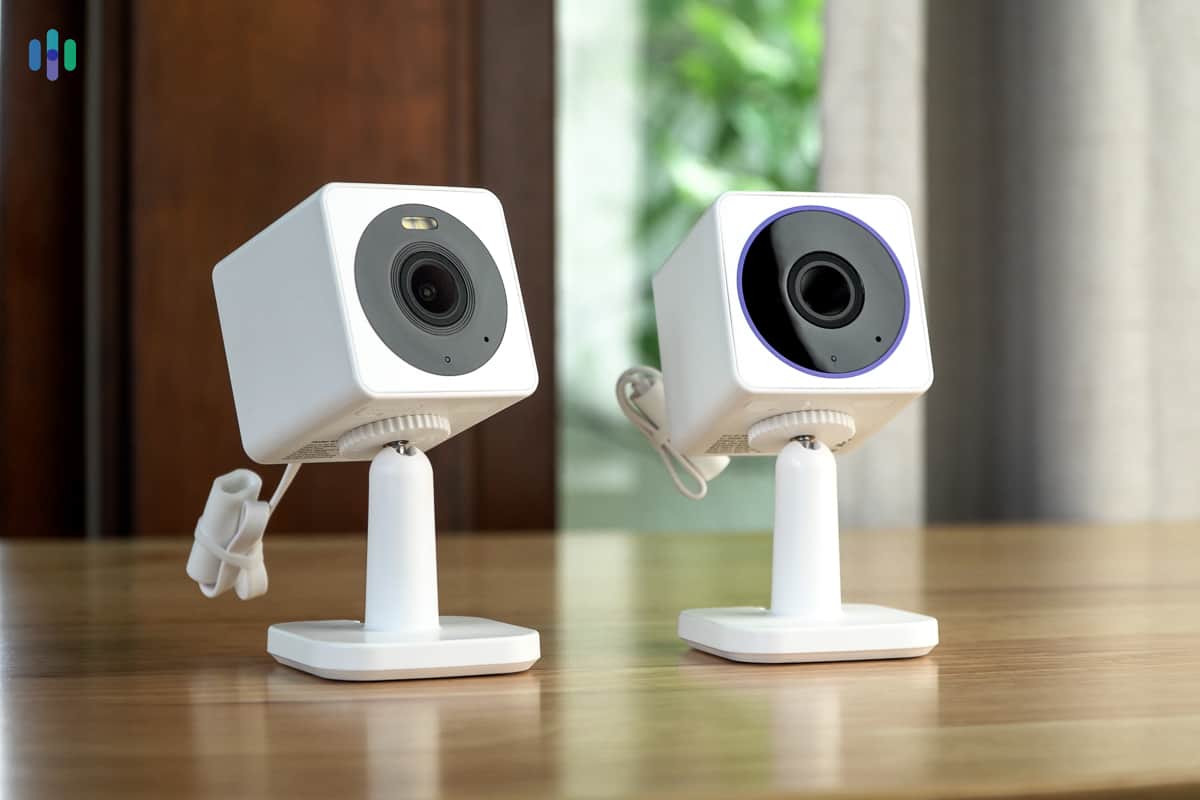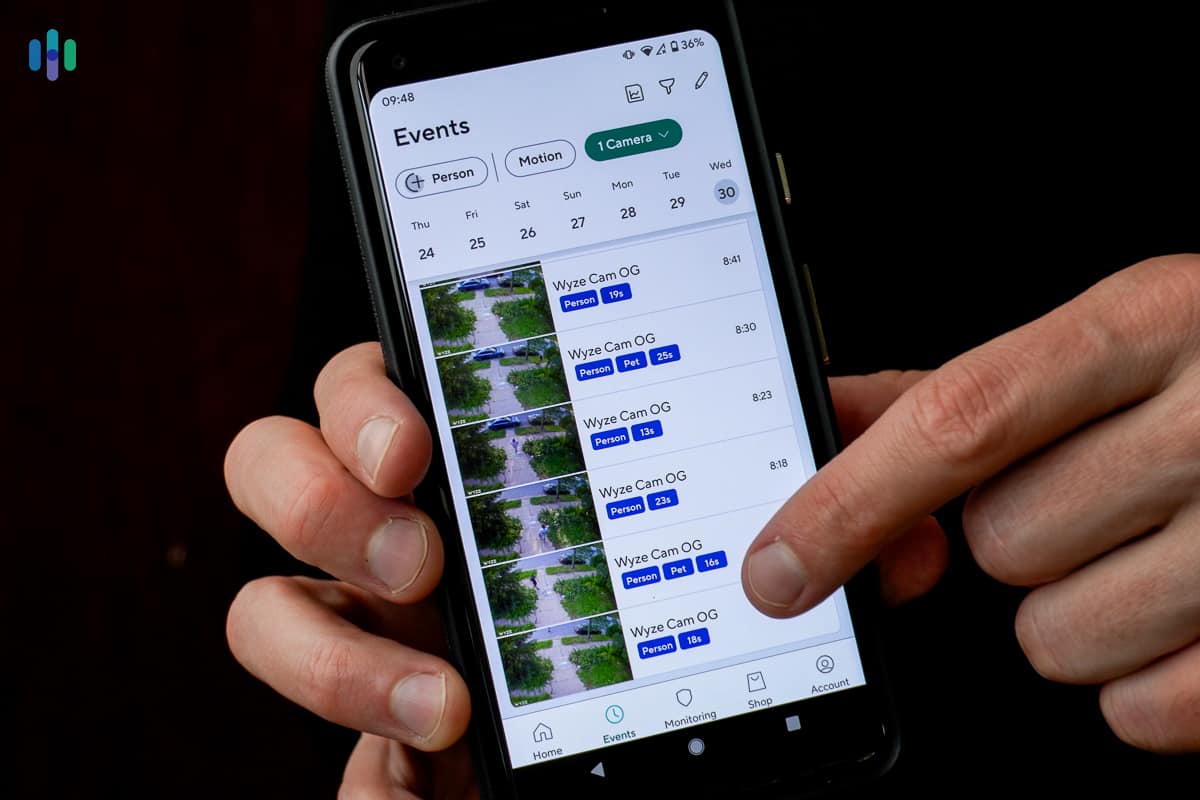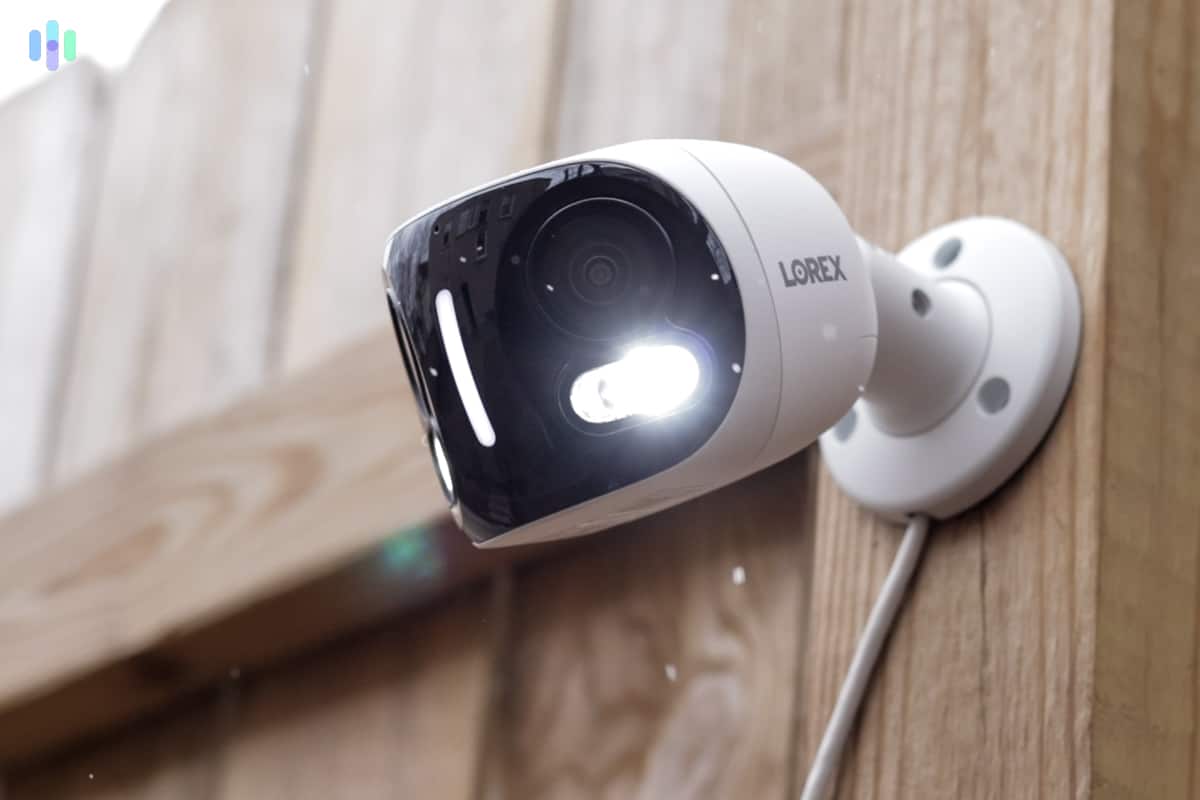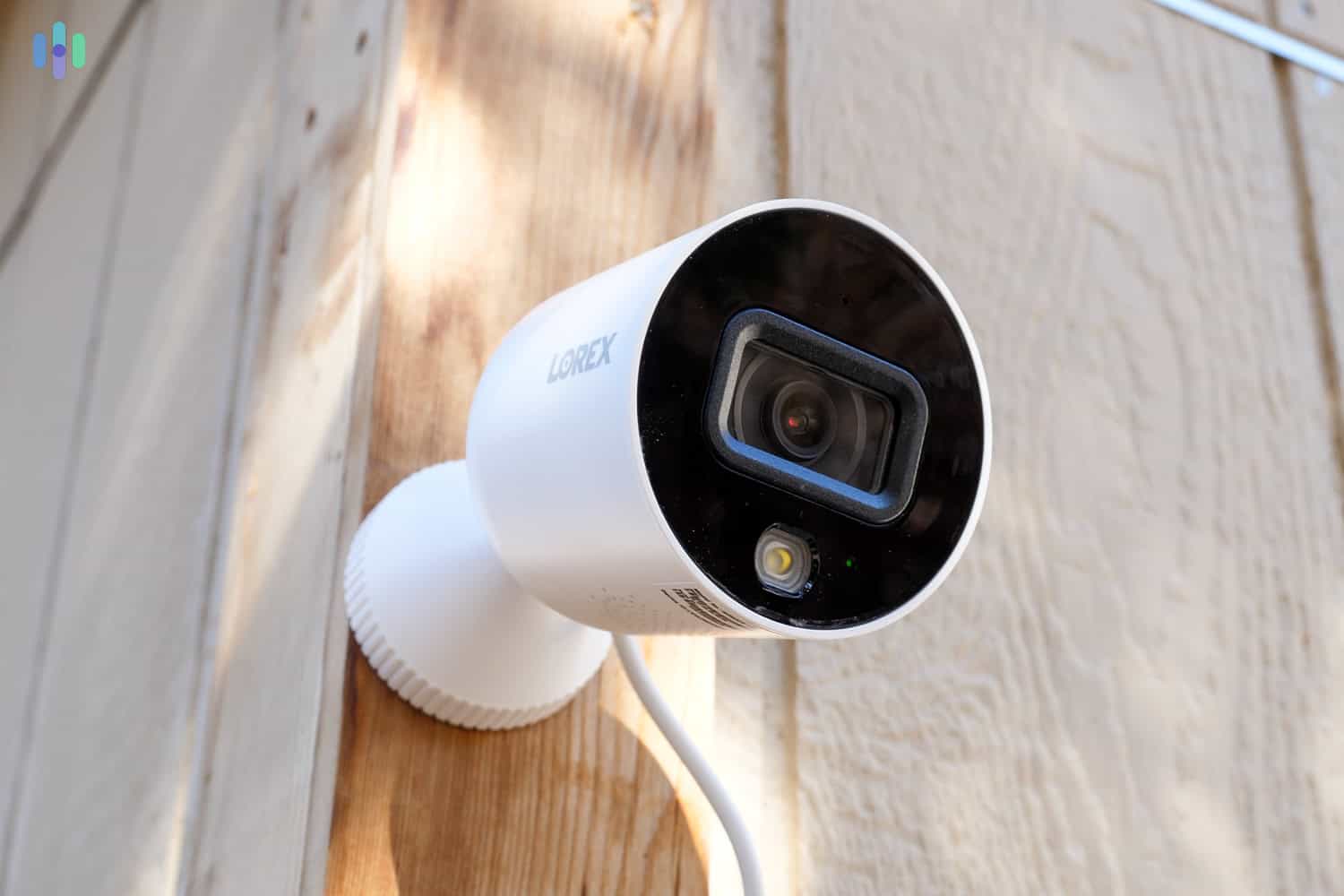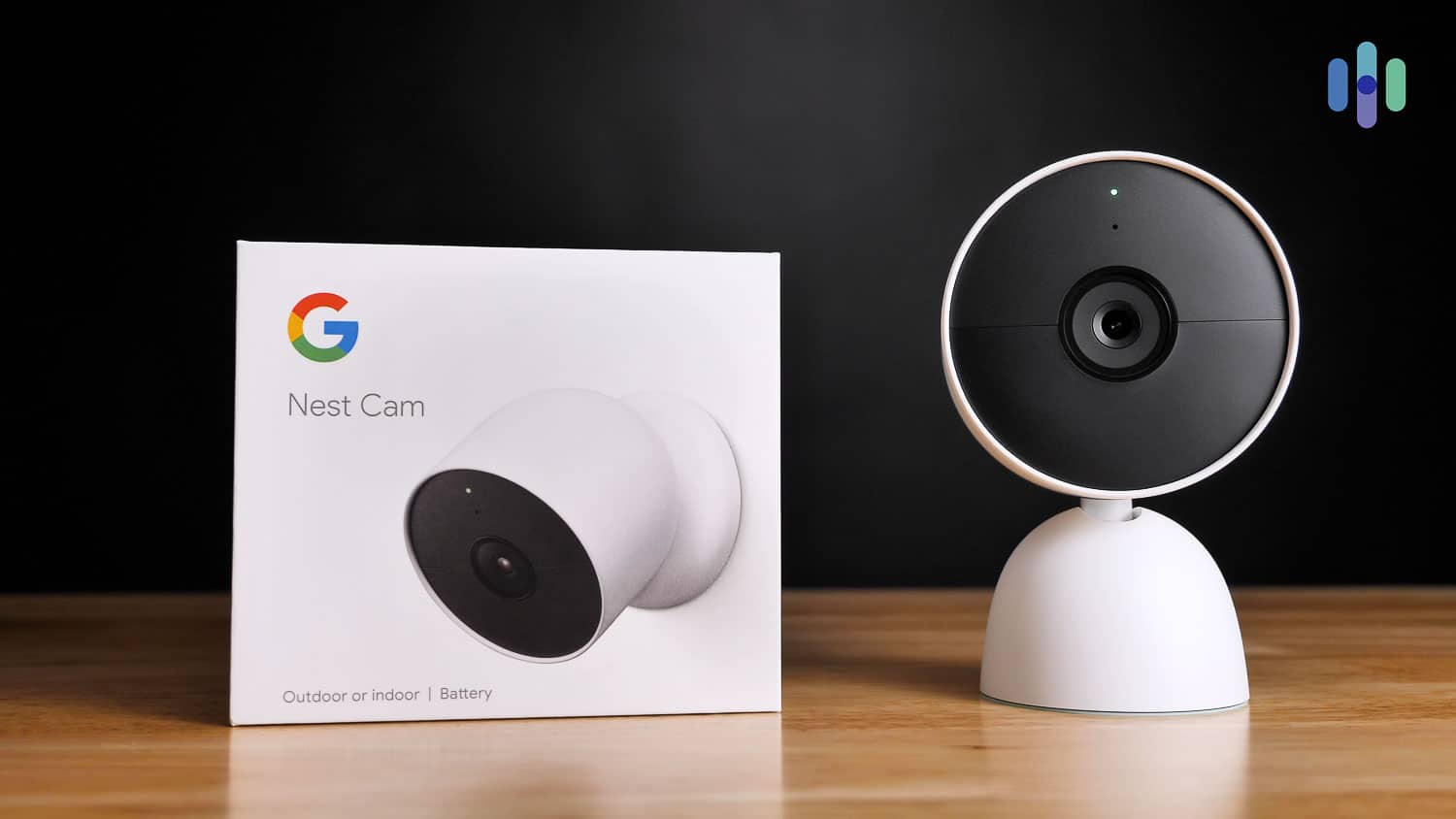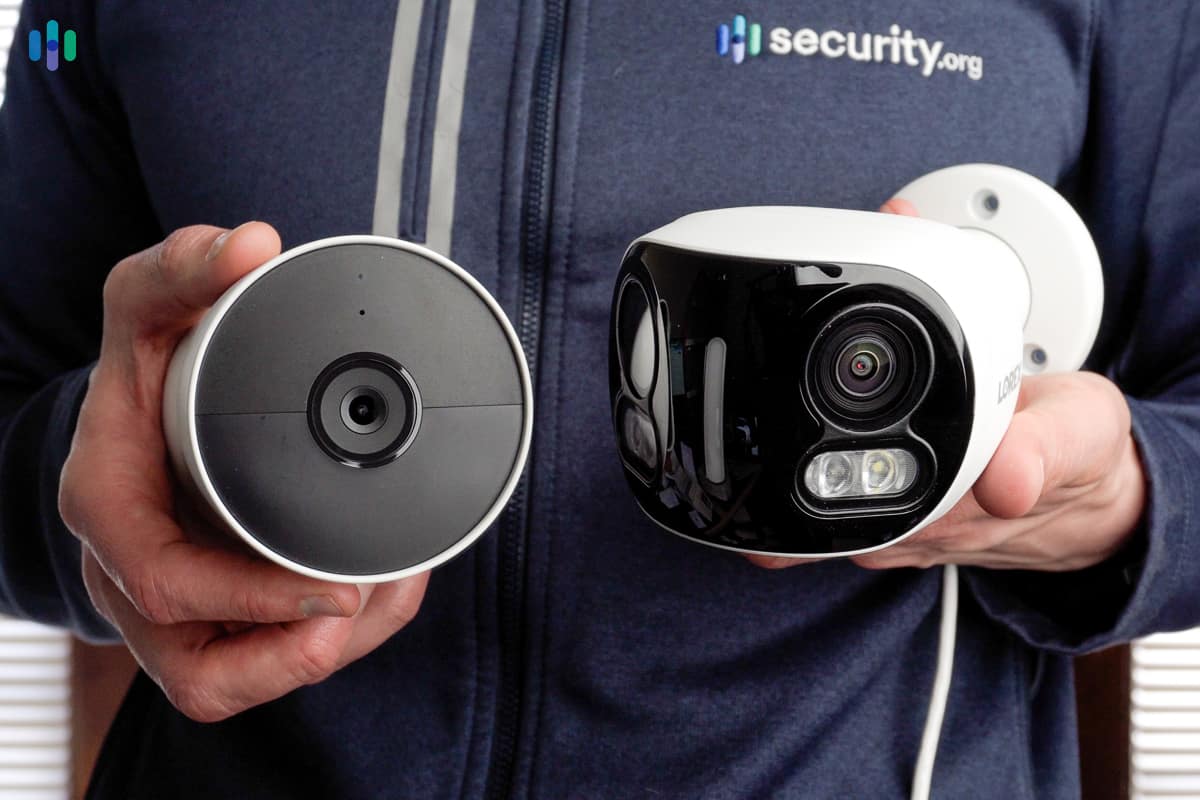Best Security Cameras With No Subscription
ADT is now our top pick since they no longer require monitoring and offer top-of-the-line Google Nest Cams with their systems.

- Three hours of cloud storage included for free
- Free plan includes motion detection alerts through the ADT+ app
- Top-tier monitoring is available when needed

- DIY monitoring options save you money on subscription fees
- Even without a subscription plan, you can use voice commands to control your cameras with Alexa
- No long-term contracts to worry about
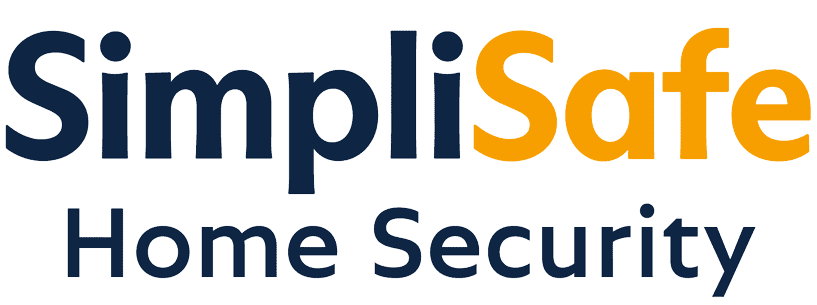
- No ongoing charges for standalone cameras and full security system
- Easy DIY installation saves more money
- Includes live streaming and real-time notifications in SimpliSafe Free plan.
Editor’s Note: Security cameras are great, but we recommend upgrading to a no-monthly-fee home security system. This way you can access extra devices like sensors and smart alarms to keep your home safe at all times.
Not everyone wants or needs one of the best professionally installed security systems with 24/7 professional monitoring and all of the bells and whistles that you can get. Some of us prefer the do-it-yourself approach and instead want one of the best DIY home security systems. Or, if you’re on a budget like most of us, you might only want a few security cameras to keep an eye on your home.
We’ll be the first to admit it, sometimes those monthly fees just end up costing too much when we’re trying to stay on a budget. When you get standalone security cameras that are totally DIY, you can cut those monthly fees whenever you need to tighten down on your budget. That’s what makes no-fee security cameras some of our favorite home security cameras overall. So, let’s get started and go through the best home security cameras you can use without a subscription.
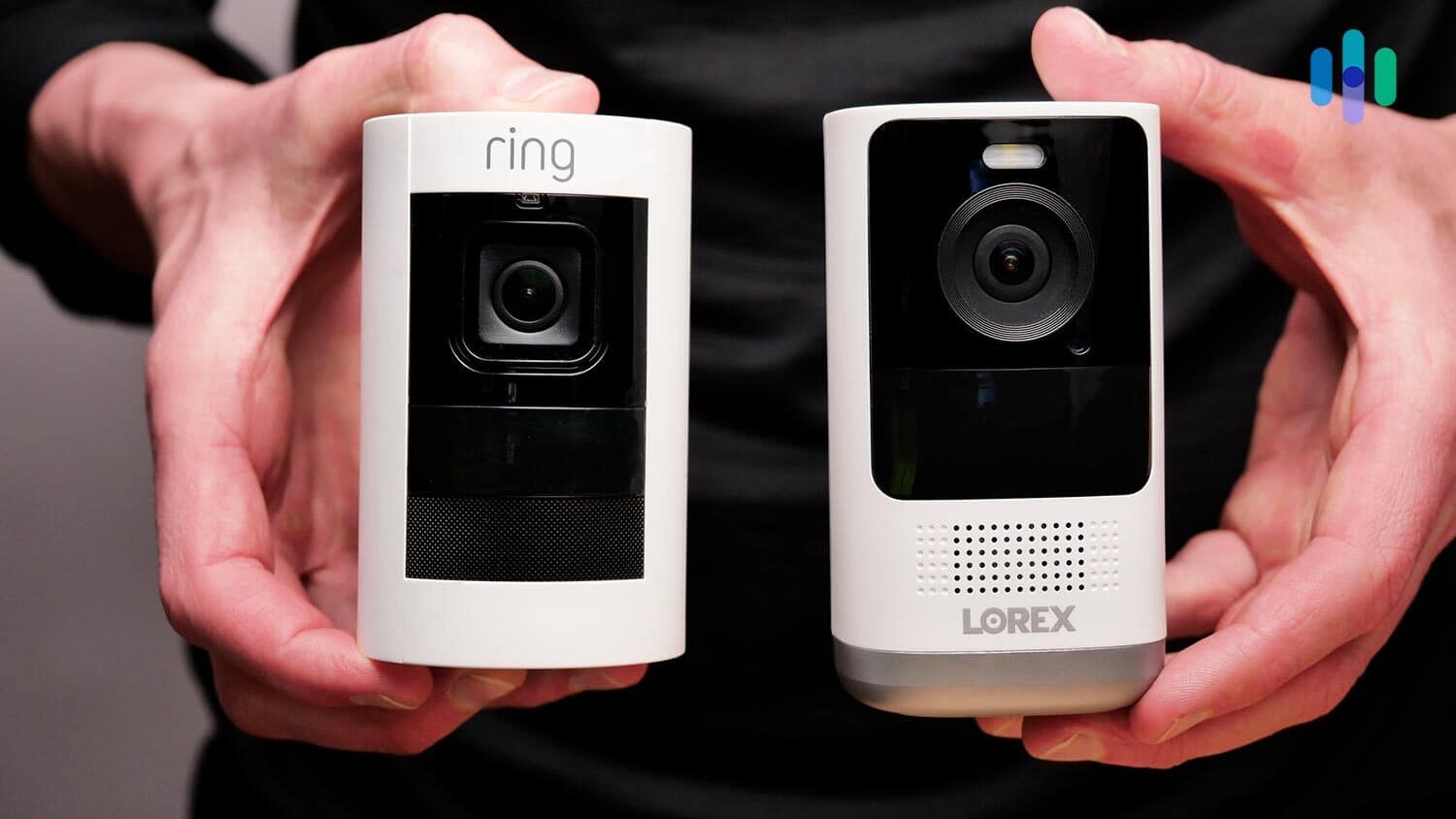
Recording Options
| SimpliSafe | Cloud |
| Lorex | DVR/NVR or micro SD card |
| Wyze | Cloud or micro SD card |
| Blink | USB |
| Ring | None |
Best No Monthly Fee Security Cameras
- ADT - Best with Free Cloud Storage
- Ring - Most Secure Camera Options
- SimpliSafe - Best DIY Installation
- Blink Camera - Most Durable Security Camera Without a Subscription
- Wyze Cam - Most Affordable Security Cameras
- Lorex - Best DVR/NVR Security Camera With No Subscription
Comparison of the Best Home Security Cameras Without Subscriptions
| System |
ADT

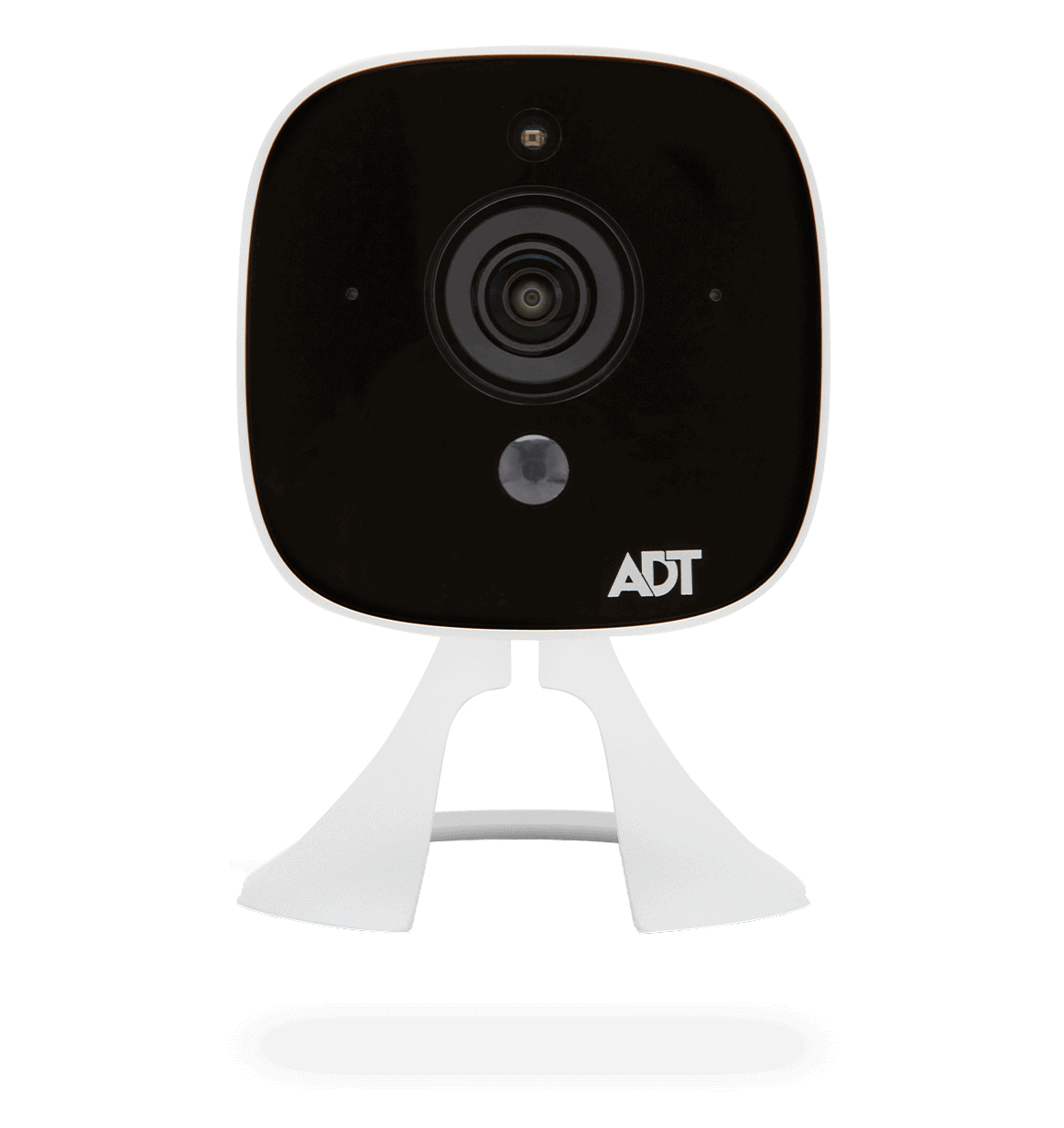
|
Ring

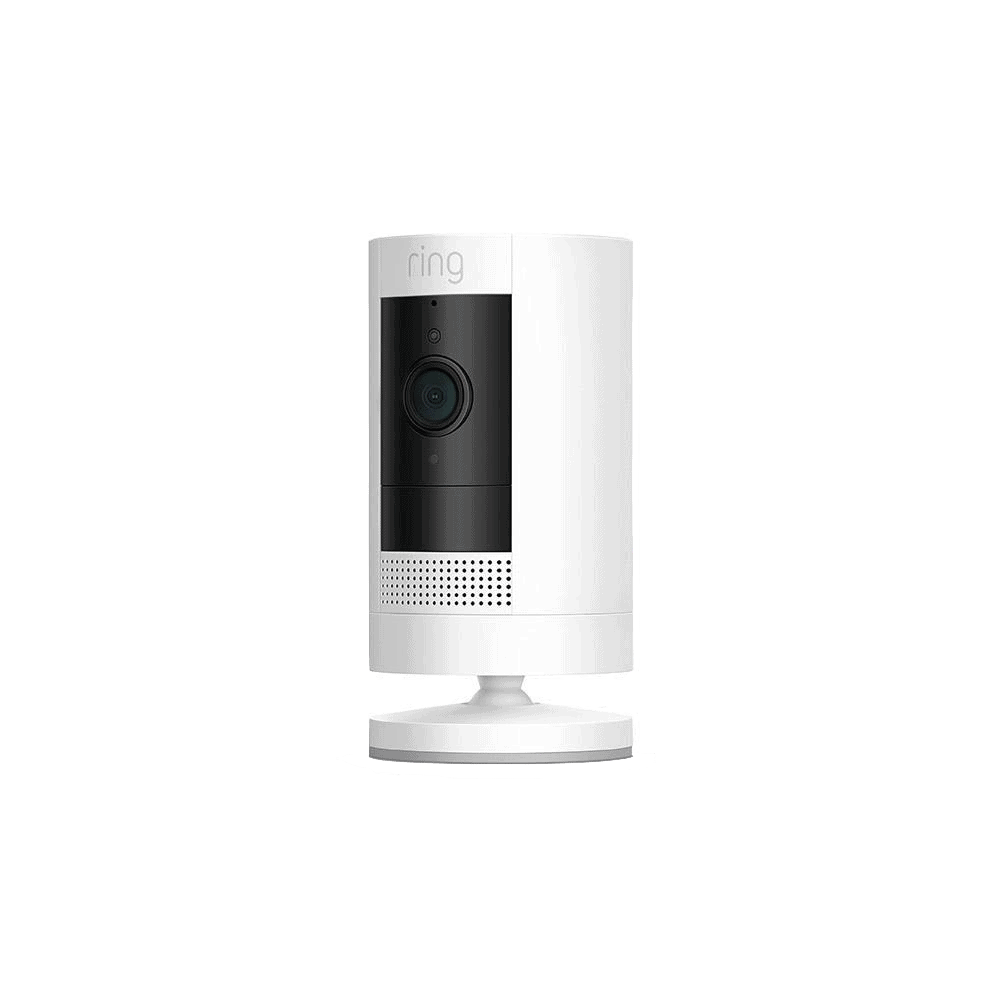
|
SimpliSafe

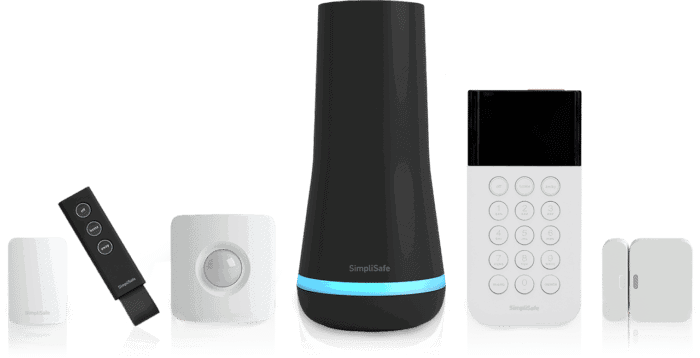
|
Blink Camera

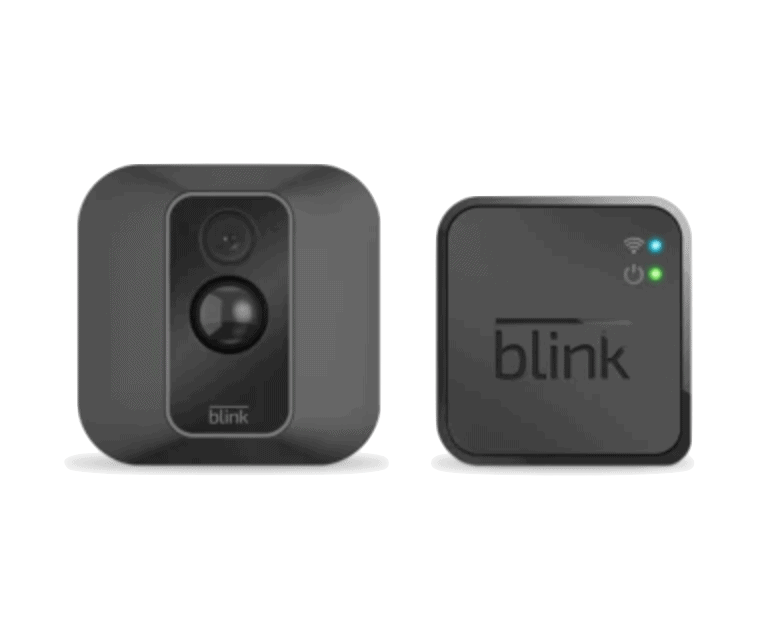
|
Wyze Cam

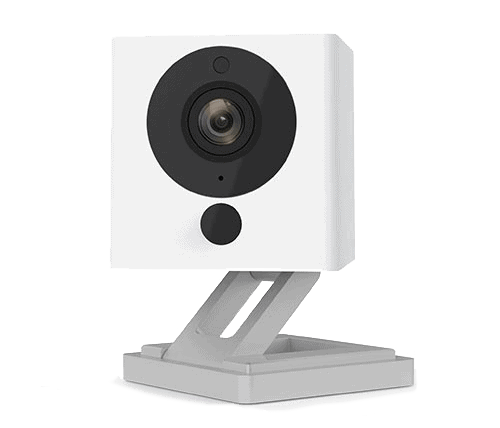
|
Lorex

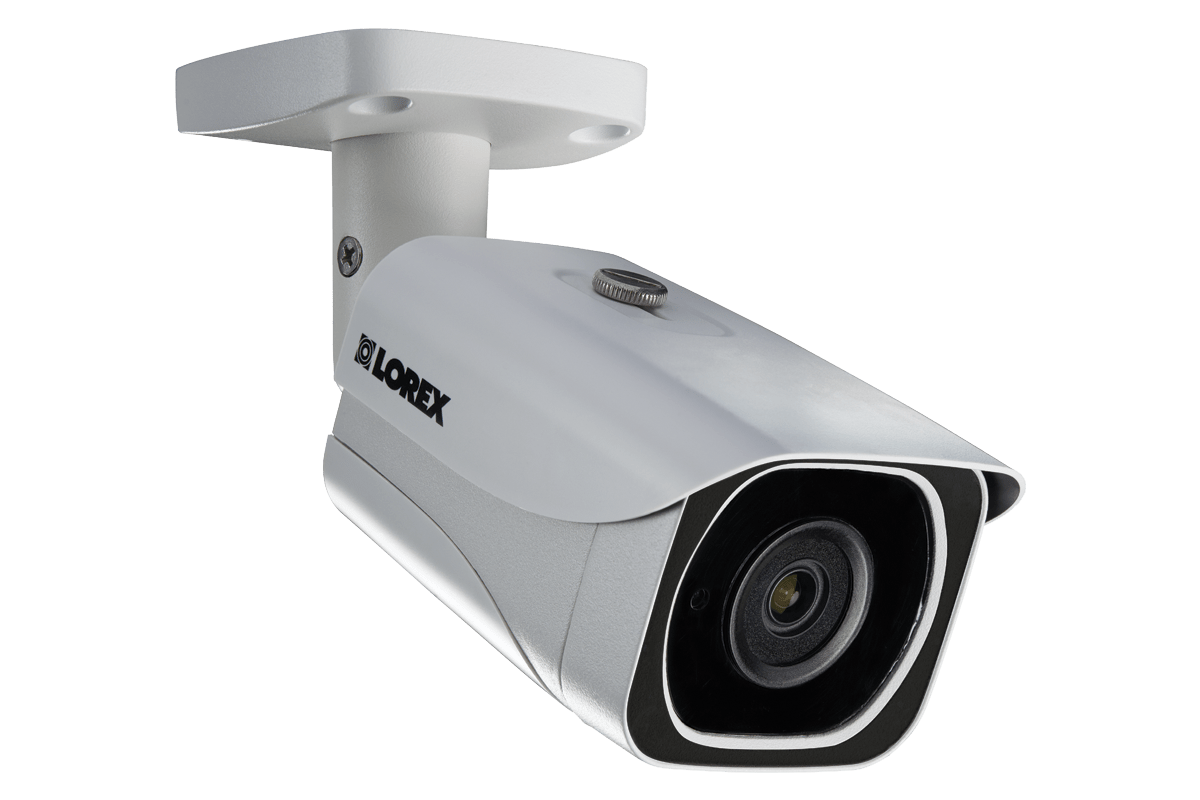
|
|---|---|---|---|---|---|---|
| Ranking | 1st | 2nd | 3rd | 4th | 5th | 6th |
| Ratings | 9.8/10 | 9.5/10 | 9.2/10 | 8.4/10 | 8.3/10 | 9.0/10 |
| Push notifications | Yes | Yes | Yes | Yes | Yes | Yes |
| Live video feeds | Yes | Yes | Yes | Yes | Yes | Yes |
| Free recording options | Three Hours of Cloud Storage | None | None | USB | Micro SD, cloud | DVR/NVR, micro SD |
| Smart platform integration | Alexa and Google Assistant | Alexa and Google Assistant | Alexa and Google Assistant | Alexa | Alexa and Google Assistant | Alexa and Google Assistant |
| Read Review | ADT Review | Ring Review | SimpliSafe Review | Blink Camera Review | Wyze Cam Review | Lorex Review |
A Detailed Look at the Best No Subscription Security Cameras
-
1. ADT - Best with Free Cloud Storage
View Packages Links to ADTProduct Specs
Resolution Up to 1080p Field of View Up to 128° Power Wired, battery Connectivity Wi-Fi, ethernet Video Storage Cloud Smart Platform Compatibility Alexa and Google Home If you’re not a security nerd like us, you might be surprised to see ADT on this list. Traditionally, they required professional installation and monitoring with hefty monthly fees and a long-term contract. In the last couple of years, that’s completely changed. Now, they offer DIY security systems with optional monitoring and Google Nest Cams. Check out our review of ADT Self Setup for all the details on their DIY process.
What We Like
- Three hours of free cloud storage for all Google Nest Cams
- Access to the ADT+ app without a subscription
- Professional monitoring available on a month-to-month basis
- Alexa and Google Home integration available for free
What We Don’t Like
- Professional installation requires a professional monitoring plan
- ADT’s automation capabilities are locked behind a subscription
- No facial recognition without a Nest Aware plan
- Most sales require at least a one month subscription
Free Cloud Storage
While three hours might not seem like much, it’s more than most competitors offer. Wyze used to offer 14 days of free cloud storage, but they no longer offer it to new customers. We were surprised how often those three hours of cloud storage came in handy. Normally, when we receive a motion alert, we can’t check it immediately, but we almost always check it within an hour. Those three hours of free cloud storage mean we could roll back the tape and see exactly what caused the alert without any guesswork.
ADT+ App
Our security expert testing the ADT+ app Now don’t expect the full capabilities of ADT+’s app without a subscription. It’s a powerful app, so we understand why they lock some of the more advanced automation features like Trusted Neighbor, one of the reasons ADT’s our favorite security system, behind their subscriptions. Still, you can use the ADT+ app to receive alerts, watch the live feed of your cameras, and control basic functions of your system, all for free.
>> Learn About: Best Smart Home Security Systems of 2025
FYI: Even if you buy your Google Nest Cams through ADT, you can still use them with the Google Nest app. From there, you can access some of their specific features, although most of their advanced features are locked behind a Nest Aware subscription as well.
No-Contract Professional Monitoring
We get that you want security cameras that don’t have any fees. Sometimes, you need some help looking over the security of your house though. For instance, when you go on vacation, you don’t want to be responsible for checking every alert your system sends you. With ADT, you can subscribe for just one month and then cancel it when you get back from vacation to relieve that burden. That’s what we do when we’re trying to save a few bucks before the holidays.
Note: Not all ADT systems let you do this. Professionally-installed ADT systems require a contract. So if you want the flexibility to opt in and out of the subscription service, you have to install ADT yourself.
-
2. Ring - Most Secure Camera Options
View on Amazon Links to Amazon.comProduct Specs
Resolution Up to 1080p Field of View Up to 155° Power Wired, battery, PoE, solar Connectivity Wi-Fi, ethernet Video Storage Cloud Smart Platform Compatibility Alexa and Google Home 
Over the last decade, Ring has built an impressive reputation for low-cost home security. You can get alerts and watch live video with no subscription. In addition, all of the company’s cameras feature simple DIY installation. Even the equipment is affordable. Essentially, you get high-quality equipment for a low price with Ring, and you’re never required to pay another cent. But, Ring has changed the features that come with its free plan before, so make sure you’re getting the latest information when assessing its free plan capabilities.1
Ring Stick Up Cam Pro What We Like
- Easy DIY installation
- Two-way audio with noise cancellation
- Affordability
- True wire-free options
What We Don’t Like
- No free recording plans
- Limited field of view
- Adding features can get expensive
- No color night vision
Lots of Camera Choices
We walk through the full experience in the Ring app, showing you what features are available and what’s locked without a subscription. We had plenty of choices when we decided to purchase a Ring camera. The company sells indoor models, outdoor models, and, of course, several different types of video doorbells. We really liked the Ring Video Doorbell Pro while testing it even though it wasn’t the cheapest. After testing it out, we put the Ring Video Doorbell Pro vs the Ring Video Doorbell 2 to see which was better. If you’re trying to stick to a budget, we can recommend the Ring Video Doorbell. That’s the basic version. There were spotlight cams, floodlight cams, and even solar-powered cams. We also had options between battery-powered and plug-in cameras. Of course, all that selection left us with the problem of making up our minds, but that’s a good problem to have.
Ring Indoor Cam (2nd Gen) Low-Price Options
The whole reason to use a security camera that doesn’t require a subscription is to save money. We were pleased to find that we could save even more money on equipment with Ring. Among Ring’s many cameras, we found several affordable options. The cheapest indoor cameras are just $60. We got a doorbell camera for just $65. And an outdoor camera cost us only $100.
Easy Installation
Very few security cameras allow for the kind of DIY installation we got with Ring. All we had to do to install the stand-alone indoor camera was set it on a side table in our living room. Other cameras come with peel-and-stick labels. Even the outdoor cameras don’t require much more than screwing a mount to the outside of the house. Plus, the company provides a whole library of helpful videos that show you exactly what to do. All in all, we completed the whole process in under half an hour.
-
3. SimpliSafe - Best DIY Installation
View Packages Links to SimpliSafeProduct Specs
Equipment Costs Packages starting at $249.96 Monitoring Options Professional and DIY Monthly Monitoring Costs Starts at $21.99 per month Contract Lengths Month-to-month Installation Options DIY or professional Smart Platform Integration Alexa and Google Home SimpliSafe’s cameras on their own are impressive. For example, the Smart Alarm Wireless Indoor Camera uses AI-powered motion detection to determine if it’s a human or animal strolling around your living room, which reduces false alarms and notifications spamming your phone. It can also capture video in 1536 HD, has a 125-degree field of view, and 10 times digital zoom. But we recommend adding more SimpliSafe products to your online cart and building an entire security system. Don’t worry. Unlike a lot of other popular home security systems, there’s still no monthly fee to budget for.
SimpliSafe’s full device lineup What We Like
- Instant phone alerts
- Infrared night vision
- Physical privacy shutters
- Easy DIY setup
What We Don’t Like
- Limited smart home integration
- No local storage
- Only four camera options
- Minimal AI features
The SimpliSafe Ecosystem
SimpliSafe doesn’t offer as many cameras as some of the other brands on this list like Lorex. They have one outdoor camera, a single video doorbell camera, and two indoor cameras. One is wireless, and the other needs a power outlet.
SimpliSafe System Base Station You could buy a security camera on its own, and it would do a fine job protecting your home. But maybe over time, you start to build out a home security system by adding motion sensors and glass break sensors. Perhaps you even throw in a smoke detector. This is where SimpliSafe shines. It’s easy to add new products in the app and integrate them with your other SimpliSafe products. And even if you have a full-blown SimpliSafe system, you’re not obligated to pay a monthly fee.
FYI: f you want to check in on SimpliSafe cameras via Alexa or Google Assistant, you’ll need a full home security setup and a subscription. You can find out how much you need to pay in our guide on SimpliSafe pricing.
Closed by Default
One of our favorite features of the Smart Alarm Wireless Indoor Camera is that the privacy shutter is closed by default, and there is an audible noise when it opens. Don’t get us wrong. We don’t believe every device is listening to us, but knowing it is possible for SimpliSafe agents to access cameras and microphones (they have a monitoring feature that works exactly that way), the physical privacy shutter gives us a little peace of mind that we know when we are being recorded,
FYI: SimpliSafe agents will only access your camera and microphone during an active alarm. This service also requires signing up for a professional monitoring plan.
SimpliSafe app’s camera view Customizing Your Camera
Surprisingly, there are a lot of customization options for a camera range that doesn’t require a subscription. The Wired Indoor Camera lets you choose the camera behavior when it’s in different modes, and you can select the notifications you want to receive for the Smart Alarm camera. All of these options are available in the SimpliSafe app, which is where you’ll spend most of your time operating the cameras. You can even use the app to connect to the live stream, no matter where you are. It’s a great way to check in on your pets when you’re away on vacation.
<
Day and night vision clips from the SimpliSafe Smart Alarm Wireless Indoor Camera. -
4. Blink Camera - Most Durable
View on Amazon Links to Amazon.comProduct Specs
Resolution Up to 1080p Field of View Up to 110° Power Battery Connectivity Wi-Fi Video Storage Cloud Smart Platform Compatibility Alexa 
One of the nice things about Blink cameras is that they all come with an IP65 rating. It’s one of the things we liked best about Blink when we compared the Blink vs Ring security systems. That means they’re sealed from dust and can withstand low-pressure water jets. That’s not all you get with Blink, though. You can use the app to get push notifications, view live footage, and set up special privacy zones. All of that is available with no subscription, and you can save video clips using a simple USB flash drive.
FYI: IP stands for Ingress Protection. The first number of an IP rating tells you how well the camera protects against dust. The second tells you how well it protects against water.
Blink Outdoor 4 and the Sync Module 2 What We Like
- Privacy zones
- IP65 rating
- IFTTT integrations
- Easy DIY installation
What We Don’t Like
- Only one person can stream at a time
- Poor night vision capabilities
- Have to buy local storage USB drive yourself
- Narrow field of view
Push Notifications
Blink Outdoor 4 Camera If you’re going to DIY your security, you need to receive a push notification any time one of your cameras detects something. Otherwise, you won’t know what’s happening at your home until you go back and review the footage, when it’s too late to stop an intruder. Blink’s cameras not only start recording when their sensors pick up movement, but they send you an alert so you can watch what’s going on live. At the first sign of trouble, you can easily call for emergency services.
USB Storage
Blink offers subscription options if you’re looking for cloud storage, but you don’t need them. Saving video clips is as easy as plugging in a USB flash drive. You have to purchase the drive yourself, but that means you can use whatever size drive suits your particular needs. Once the drive is plugged in, you can view clips anytime on your app. Or you can remove the drive, connect it to a tablet or laptop, and review the footage in more detail. We’re fans of all types of local storage, but nothing is simpler than USB storage.
Day and night vision footage from the Blink Outdoor 4. Privacy Zones
The security camera industry has exploded over the last several years, but that growth has not been without controversy. One of the biggest concerns is that with all that high-power equipment trained on your neighborhood, you may wind up seeing some things you don’t want to see, like what’s happening in your neighbor’s bedroom. Blink cameras let you set up privacy zones, areas within the field of view that are blacked out. That way you and your neighbors can both rest easier knowing both your property and your privacy are protected.
-
5. Wyze Cam - Most Affordable Security Cameras
View on Amazon Links to Amazon.comProduct Specs
Resolution Up to 1080p Field of View Up to 110° Power Wired Connectivity Wi-Fi Storage Cloud, local Smart Platform Compatibility Alexa and Google Home Like Ring, Wyze cameras offer affordable recording. Their lowest-priced cameras run just $30. With a multi-featured, intuitive app and support for both Alexa and Google Home, Wyze offers full-service cameras for one of the lowest prices in the industry.
Wyze Cam OG and Wyze Cam OG Telephoto What We Like
- Existing customers can get 14 days of free cloud storage
- Cameras as low as $30
- Integration with both Alexa and Google Home
- Activity zones
What We Don’t Like
- Person detection costs extra
- Narrow field of view
- Indoor cameras require outlets
- No professional monitoring options
Day and night vision clips from the Wyze Cam OG and Wyze Cam OG Telephoto. Free Cloud Storage
Similar to Lorex, Wyze features a number of cameras that have a microSD card slot so you can record directly to your camera. You don’t necessarily need local storage with Wyze. If you’re an existing customer, you might have access to 14 days of free cloud storage. They didn’t cut off their current users when they stopped offering it to new customers.
Support for Alexa and Google Home
We’re all about turning our home into a smart home. That means we expect all the equipment we buy, including security equipment, to be compatible with either Alexa or Google Home. It turns out that Wyze cameras are compatible with both. We were able to turn the system on and off using just our voices. We also set up a nifty routine so that the smart lights in our foyer came on every time our outdoor cameras detected motion.
Wyze App
Events on the Wyze app The Wyze app let us do literally everything with our cameras — all through an easy-to-use, intuitive interface. What’s everything? Well, we checked alerts, watched live and recorded footage, communicated with visitors through two-way audio, and turned the system on and off. We were even able to use the app to set up IFTTT routines. With all the remotes we have to keep up with in our households, it was nice to have a single app that can do so much.
-
6. Lorex - Best DVR/NVR Security Camera With No Subscription
View Packages Links to LorexProduct Specs
Resolution Up to 4K HD Field of View Up to 180° Power Wired, battery, PoE Connectivity Wi-Fi, ethernet Video Storage Cloud, Local Smart Platform Compatibility Alexa and Google Home 
Lorex offers professional-grade security cameras for your home. When Lorex began, their products were targeted toward protecting commercial property. Even though they now sell to homeowners, their cameras still feature advanced features like smart home integration, 4K video resolution, and multiple motion triggers. Best of all, you have a choice of how to record video. Many of the company’s cameras feature slots for microSD cards. Others let you store video on DVR or NVR. Either way, Lorex’s pricing structure means you only need to pay one upfront fee for the equipment, and then you never have to pay for a monitoring or storage subscription.
Lorex 4k Dual Lens Camera What We Like
- Lots of camera options
- Two different ways to record
- Free push notifications
- Video quality up to 4K
What We Don’t Like
- Relatively high prices
- No free cloud storage
- Limited customer service
- Complex setup
Recording Options
Day and night vision clips from the Lorex 4K Dual-Lens Wi-Fi Security Camera. Lorex is known for offering a ton of camera options — so many that your head might spin. But don’t worry, that’s why we made a Lorex FAQ guide to help you understand their home security camera offerings. We like that the company offers multiple recording options as well. If you don’t mind a wired system, you can get either a DVR or an NVR system to save all your videos. Both come with up to 3 TB of storage. Or, if you prefer, you can purchase cameras with slots for microSD cards. With one card, you can record up to 256 GB of footage. Either way, you get plenty of storage with no monthly cost whatsoever.
Definitions: DVR stands for digital video recorder, while NVR stands for network video recorder. A camera sends video to a DVR, which then processes it. A camera processes video before it sends it to an NVR, which simply stores it.
High-Quality Video
The industry standard for video resolution these days is 1080p. Basically, that provides 2 million pixels for a crystal clear image. That’s a lot of pixels. Many of Lorex’s cameras, though, come with 4K resolution. That’s four times better than 1080p, with 8 million pixels. With that kind of image quality, we were almost able to count the hairs on our delivery person’s head. Are you looking for the best video quality you can find? Take a look at our list of the best 4K security cameras for more options.
Lorex Outdoor cam Multiple Triggers
One of the things we liked best about our Lorex cameras was the fact that we had a choice when it came to how its motion detection worked. All of the company’s cameras come with motion detection, of course. However, many also feature passive infrared (PIR) heat detection as well. PIR systems measure differences in heat from one image to the next, which lets us fine-tune our system and avoid those alerts we were getting every time the wind blew.
Methodology
We take our jobs seriously, and we never put together a list like this one without thoroughly researching every home security camera we can get our hands on. We compare equipment based on a number of important measures, such as video quality, durability, storage options, price, ease of installation, smart home integration, and bonus features. Of course, beyond all of that, every camera on this list had to work without any subscription fees whatsoever.
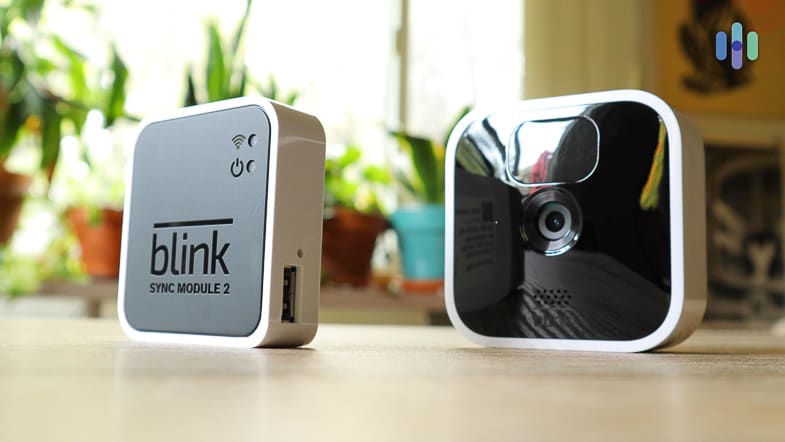
Want to know more about how we choose cameras? Check out our complete guide to home security cameras.
Video Quality
Video quality, of course, isn’t about any one single element of a camera. Rather, it’s made up of several interactive features:
- Image resolution: Video quality starts with resolution. We expect the cameras we choose to have a minimum resolution of 1080p. Many of the cameras on this list, though, have 4K resolution.
- Field of view: Field of view is important because it dictates just how much of your home your camera can monitor at one time. We look for cameras with at least a 120-degree field of view.
- Night vision: Finally, we also expect cameras to have clear night vision so they can protect us just as well after the sun goes down. LED infrared is great. Color night vision is even better.
Durability
We want all the cameras we recommend to be durable. Durability is especially important when it comes to outdoor cameras, though. IP ratings offer an important measure of durability. These tell us how well cameras resist dust and water. We like an IP rating of 65 since that means the camera is dust-tight and can repel low-level water jets.
In addition to the IP rating, many home security cameras also come with detailed information about the temperatures in which they can operate. We generally look for cameras that can work at temperatures between negative 10 degrees and 110 degrees Fahrenheit. Obviously, you may need a wider range than that depending on where you live.
Storage Options
Because this is a list of security cameras requiring no subscription, we paid special attention to each product’s storage options. While you can monitor a home security system without the ability to record video, it’s not easy. All but one of the cameras on this list include local storage capabilities. These range from DVR/NVR recorders to microSD card slots to USB ports. One system, ADT, even offers three hours of free cloud storage.
Price
Price always matters. After all, this is a list of cameras that require no subscription, so obviously you’re looking for a system that will save you a little money. No system is worth the money, even a free system, if it doesn’t do the job it’s supposed to do. That’s why the measure we like to use instead of price is value. Price plays an important role in determining value, but so do other elements, like video quality, durability, and bonus features. We don’t mind paying a few dollars extra, for example, for a system that can distinguish between people and animals, since that cuts down on the number of false alerts we get.
Ease of Installation
All of the cameras on this page feature full DIY installation. We don’t mind DIY, as long as we can actually do it ourselves. We’re handy with a screwdriver, but don’t ask us to do anything fancier than screw a mount onto the wall. We look for products that are truly DIY and that can be installed in under an hour.
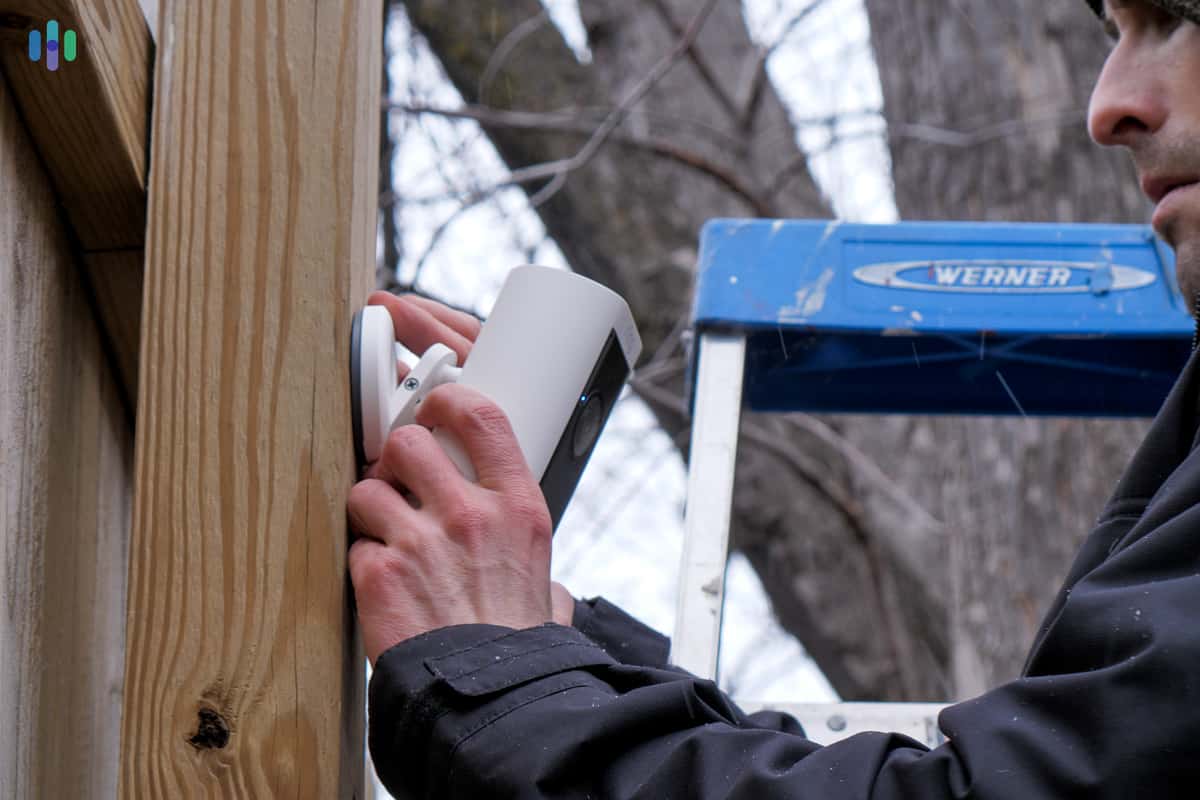
Bonus Features
Finally, we pay attention to all the bonus features a camera offers. Does it, for instance, let us set up activity zones so we get alerts when someone’s at our door, but not when cars go by on the street? Can it tell the difference between people and animals? Does it include facial recognition? Again, which extra matters most to you will depend on your situation, but we want to make sure you know all the options before you invest.
Recap
Typically, we recommend signing up for full-service 24/7 professional monitoring any time you install security cameras. We get it: Sometimes you just need to save a little money. You asked for a list of the best security cameras with no subscriptions, and we delivered.
The fact is, there are some great DIY home security cameras out there. It isn’t so much about finding good cameras as it is about finding the ones with the features you really need. Are you looking for tons of choices and state-of-the-art equipment? Or are you looking for easy installation? Do you prefer cameras that mesh with your existing smart home? Which kinds of storage options do you prefer? The bottom line is, if you’re looking for no-subscription security, you’ll find what you need somewhere on this list.
FAQs
We’re all looking for more these days, right? Well, we’ve got more answers. Take a look below for some of our responses to your most frequently asked questions about the best no-subscription security cameras.
-
Is there a security camera that doesn’t require a subscription?
There are many security cameras that don’t require a subscription. The best include Google Nest Cams through ADT, Ring, SimpliSafe, Blink, Wyze, and Lorex. Each offers enough features on their free plan to upgrade the security of your home whether it’s free local or cloud storage, or useful alerts.
-
Which outdoor cameras do not require a subscription?
There are several brands of outdoor camera you can buy that don’t require a subscription, such as ADT, Ring, SimpliSafe, Blink, Wyze, and Lorex. All of these cameras allow you to monitor your home yourself, and most of them even provide some free means of recording video.
-
What is the most reliable security camera system?
ADT offers the most reliable security camera system. Since partnering with Google, they now offer Nest Cams which are top-of-the-line cameras with some of the most advanced features on the market such as facial recognition. Pair that with ADT’s 150 years of experience securing homes and you get reliability that can’t be matched.
-
Does SimpliSafe require a monthly fee?
No, SimpliSafe does not require a monthly fee. You can set the system up to monitor yourself. You get free alerts and you can livestream footage. However, if you want to record that footage, you’ll need to invest in one of SimpliSafe’s storage plans or 24/7 professional monitoring services.
Ring. (2023). An Update to Ring In-App Features.
ring.com/support/articles/087hi/An-Update-to-Ring-In-App-Features


